Laminate flooring is a relatively new, but already floor covering option that has already gained popularity among a large number of buyers. It differs not only high operational characteristics, but also considerable simplicity in installation. Step-by-step installation instructions for laminate do-it-yourselfers allow you to mount the coating, even if you do not have skills in the field of repair and finishing works.

The structure of the laminated panels
The design of the laminate consists of several layers, which are connected in a panel. On each side of this panel there are special locking devices that allow you to quickly and easily connect them to each other.
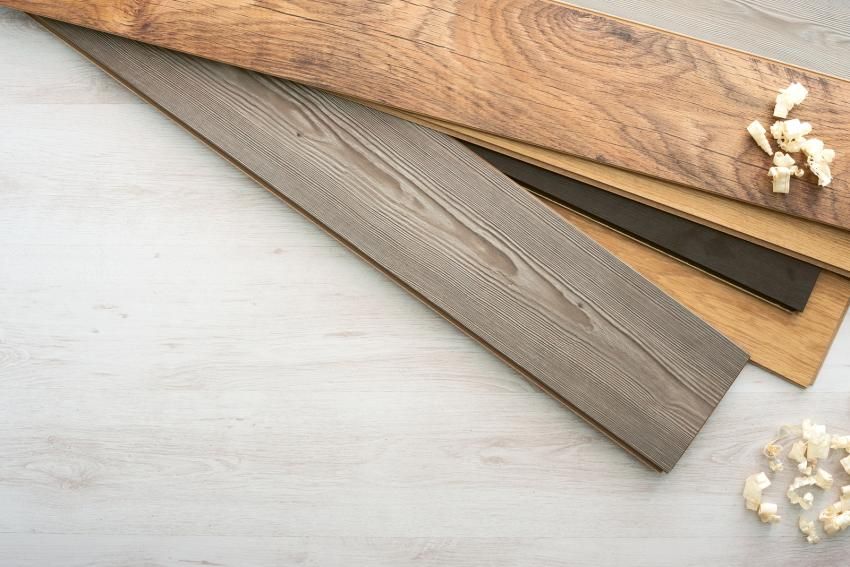
Because of this design feature, the coating is very sensitive to the base, that is, the slightest unevenness of the floor on which the laminate is laid, can lead to loosening and premature wear of the locks. And this, in turn, leads to the formation of cracks, the accumulation of dust and dirt in them, and to other unpleasant consequences.
The laminate consists of the following layers:
- the top layer – consists of an antistatic heavy-duty material, takes on the main mechanical load;
- acrylate resin layer – enriched with special mineral particles to impart greater strength;
- impregnated with a special composition of paper – a decorative layer that provides an aesthetic appearance of the coating;
- adhesive layer – fastens the top layers with the base;
- The basis of plastic – the thickest layer, equipped with waterproofing. It also houses the original locking system of the laminate.

The permissible unevenness of the floor when laying laminate should not exceed 2 mm for every 2 m? surface area. Suppose a slope within 4 mm to 2 m ?, but on such a floor is not recommended to install furniture and other interior items. When laying laminate flooring on an uneven floor, inevitably there will be a bias due to which the cabinet doors may not close.
When preparing the floor for laying laminate, the leveling option depends on the material from which the base is made. General alignment tips boil down to the following points:
- old concrete pavement is subject to overhaul. The cracks widen and fill with cement mortar, large cavities must be filled with a self-leveling mixture. At the end, the floor is sanded or poured;
- broken boards are replaced in wooden floors or leveled with plywood;
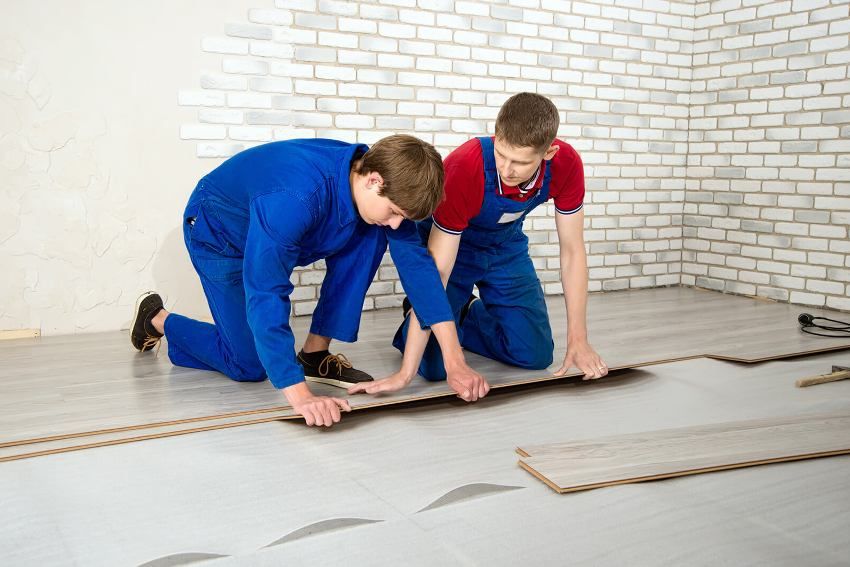
- cement screed primed with special compounds;
- Plywood or plank flooring is ground with the help of special equipment to eliminate minor irregularities.
Helpful advice! All floor types must be thoroughly cleaned and vacuumed before laying laminate.
Choosing the best option for leveling the floor, you need to focus on criteria such as the amount of effort and time spent, as well as financial expenses.
When laying laminate flooring, it is highly undesirable for the floor covering to come into contact with the surface that emits moisture. Therefore, additional installation of special layers is necessary, which will absorb water and prevent condensation of steam. A special diffusion membrane or a layer of polyethylene 20 mm thick is well suited as such layers. Sheets of material must be laid with an overlap of 20 cm, and it is best to join them together with tape.
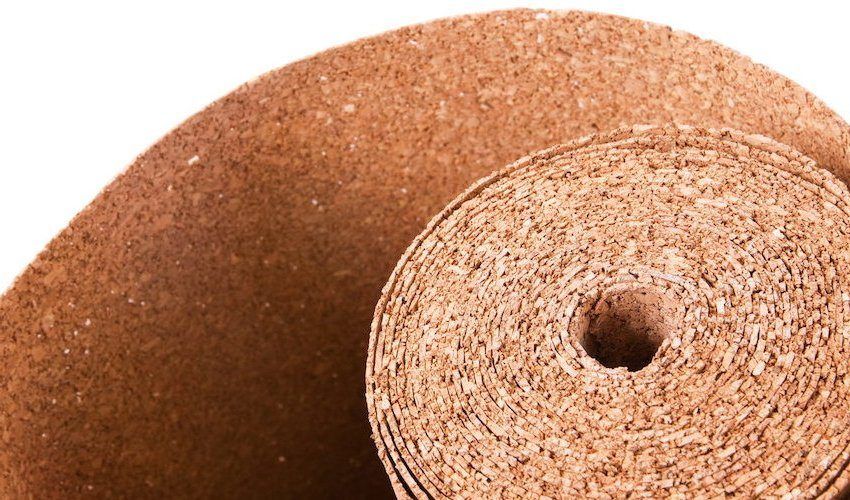
Installing a waterproofing layer is required if you are installing laminate on a concrete base. The following variants of the base coverage fall under this definition:
- directly concrete floor, which is characterized by the presence of crushed stone or gravel in the solution;
- cement-sand screed;
- factory plates and monolithic floors.
At the same time, the service life of a concrete floor is of no fundamental importance, since both new and old coatings can emit moisture. Installing a waterproofing layer will protect the moisture-sensitive laminate from deformation, so this moment must be taken into account when calculating the layout of the laminate.

Practically in all instructions for laying laminate it is pronounced that the substrate should perform the following functions:
- soundproofing;
- providing static floor;
- alignment of small base defects;
- moisture protection;
- protection of the underside of the laminate against abrasion.
As such a layer can be ordinary linoleum.
Cells for tile and laminate: how to put it between the covers. The choice of decorative threshold. Laying laminate in the kitchen. Combining tile and laminate to create an original interior.
Video instructions for laying laminate on linoleum show that for high-quality installation of the coating, you need to strictly adhere to the installed technology. To begin the flooring of panels it is necessary in the direction from the window, perpendicular to it. In order for a gap between the laminate and the wall, it is necessary to install special spacer wedges.
Helpful advice! The deformation gap should be within 10 mm. It serves to ensure that the coating can expand and contract with changes in temperature or humidity level without deforming the surface.
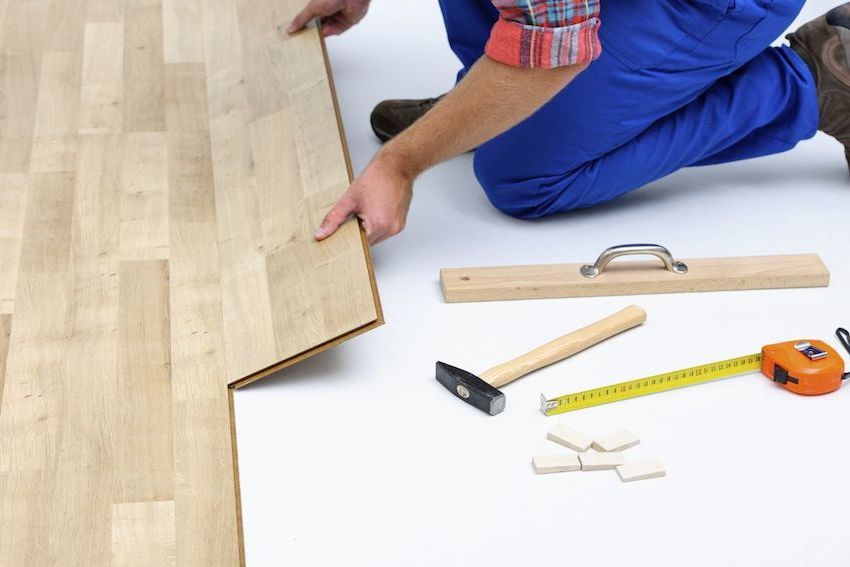
After the first row of coating is mounted, it is necessary to trim a short panel. If the trimmed part is longer than 50 cm, then it can be laid in the second row, and thus minimized the amount of waste. Second-row boards are applied to adjacent panels at an angle of 45 degrees. The last panel is mounted using a special clamp, which allows it to maintain a fixed state.
In order to protect the deformation gap when laying laminate, after installing all the panels on the linoleum skirting installed. If you plan to hide wires and other communications under them, it is recommended to use models of baseboards with special channels.
The thickness of the substrate depends on the thickness of the laminate panels. This means that for panels with a thickness of 9 mm, the substrate must be no thicker than 3 mm. In the instructions, which is attached to each specific flooring model, there are recommendations on the choice of the substrate, which should be guided. In this case, it is necessary to take into account the peculiarities of laying laminate in a floating way, that is, when the panels are connected only to each other, and not attached to the base or walls.

There are three main areas of laminate layout:
- Longitudinal – the coating is mounted parallel to the flow of sunlight from the window. The easiest and most popular version of the layout.
- Transverse – allows you to visually increase the area of the room, while the panels are located across the room (parallel to the wall with a window opening).
- Diagonal – the most difficult direction in terms of installation, which allows even more than transverse to increase the area of the room.
If the laminate is laid on a plank floor, then the panels should be arranged perpendicular to the floorboards. And in order to minimize material consumption, it is recommended to draw a floor plan with its dimensions by hand before installation. All openings and niches are put on it, a deformation ledge is outlined, and then it is considered how many panels are necessary for laying the covering. Thus it is necessary to take into account both the number of whole panels, and the possible use of scrap.

Photos of ways of laying laminate will help you understand which option is best suited for your room. Also, for the calculations, you can use special construction calculators that can be easily found on the Internet.
What do you need for laying laminate as quickly and efficiently as possible? You will need the following set of tools:
- roulette, building corner and level – to ensure smooth installation;
- construction knife, jigsaw or handsaw – for cutting panels, baseboards and bars;
- pencil – put marks on the walls and panels;
- hammer – to secure the panels.
You can buy a set for laying laminate at any hardware store, and the use of the above tools does not require special skills.
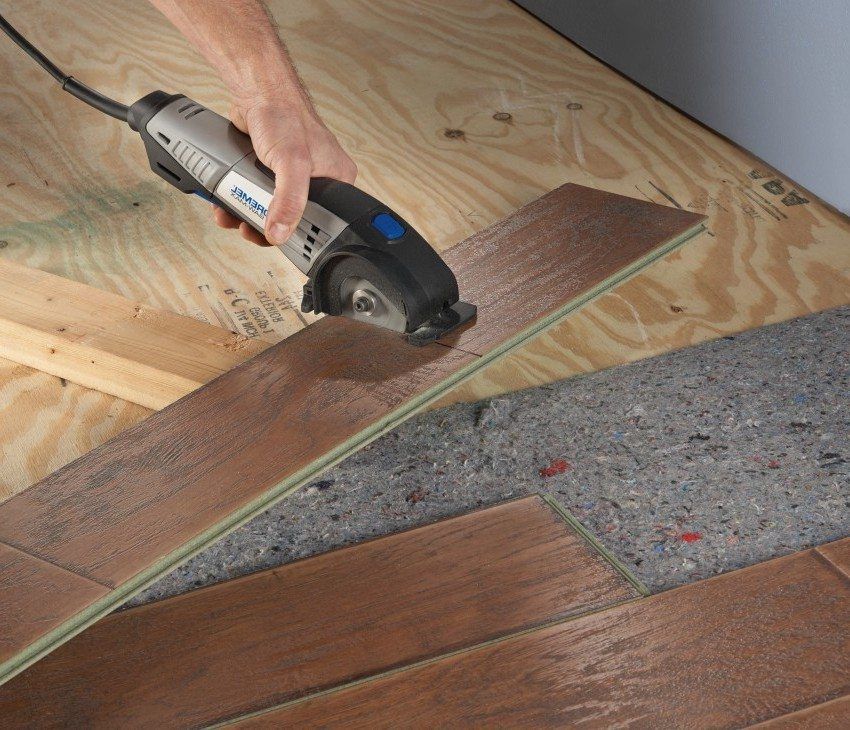
The elements of the laminate can be interconnected in several different ways:
- lock-locks are special latches in which the crest of each next cover panel is inserted into the groove of the previous one. This is done strictly vertically or horizontally, and to improve the reliability of the joining of the junction, it is recommended to tap a hammer or grease it with glue;
- double click-locks – the crest of the next panel is not just inserted into the groove, but also snaps into place by applying a little effort. This connection option is more reliable and does not require additional reinforcement;
- adhesive method – recently used extremely rarely. When using this method, the front and end side of each panel is pre-treated with glue.
When laying a laminate with your own hands, the step-by-step instruction has slight differences depending on how you assemble – along the rows, attaching the already finished row, or along individual panels. The second option is easier to carry out alone, and the first requires less time.
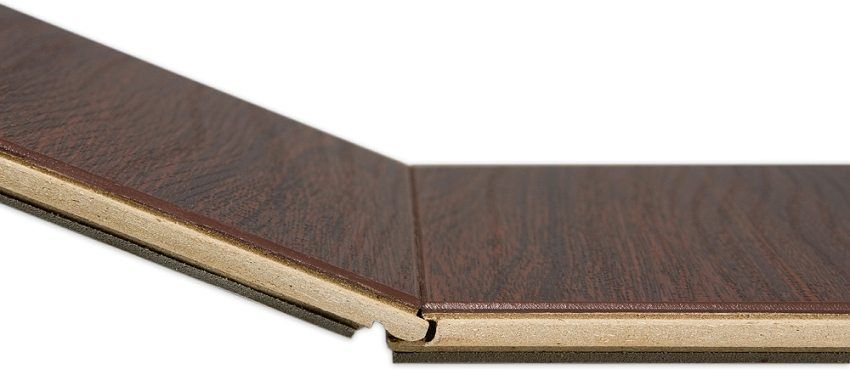
After you have completed the leveling of the floor, acquired all the necessary tools and decided on a suitable system for connecting the panels, you can proceed directly to laying the flooring.

Any type of installation in which there is a consistent connection of one board to another is called laying laminate on deck. Deck installation is suitable for all types of laminate, and also differs from curly saving of material and simplicity of work. For the laying of the deck method is not required to carry out complex calculations and often trim panels.
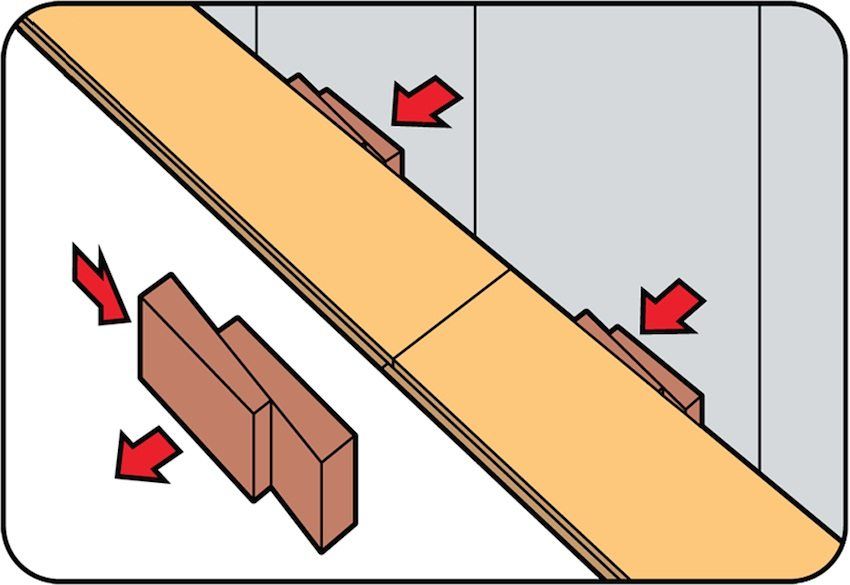
If you are doing the stacking by the piece, then the sequence of actions will be as follows:
- The first panel is placed with a lock on itself, a crest to the wall. Wedges are installed between the wall and the panels to form a gap;
- the second panel joins the second and so on;
- between the combined panels there should be no gaps or differences in height. The longitudinal edge must also be flush;

- in order to make a connection along a shared edge, the panels must first be inserted at an angle, and then brought up with a click to click;
- end locks can be connected horizontally or vertically;
- a scrap of the last panel in the first row is placed at the beginning of the second.

Helpful advice! Laying laminate video will help you complete all actions as quickly and efficiently as possible, and also insure against common mistakes. Find such video instructions can be on many specialized sites.
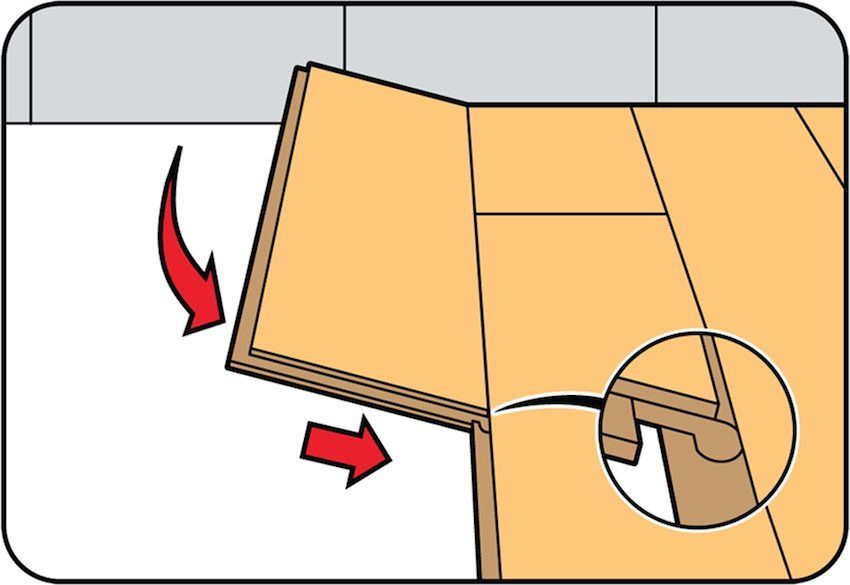
When laying laminate in rows, you need to do the following:
- the first row is assembled from pre-trimmed panels. The row fits lock on itself. The first row does not necessarily have to be placed near the wall;
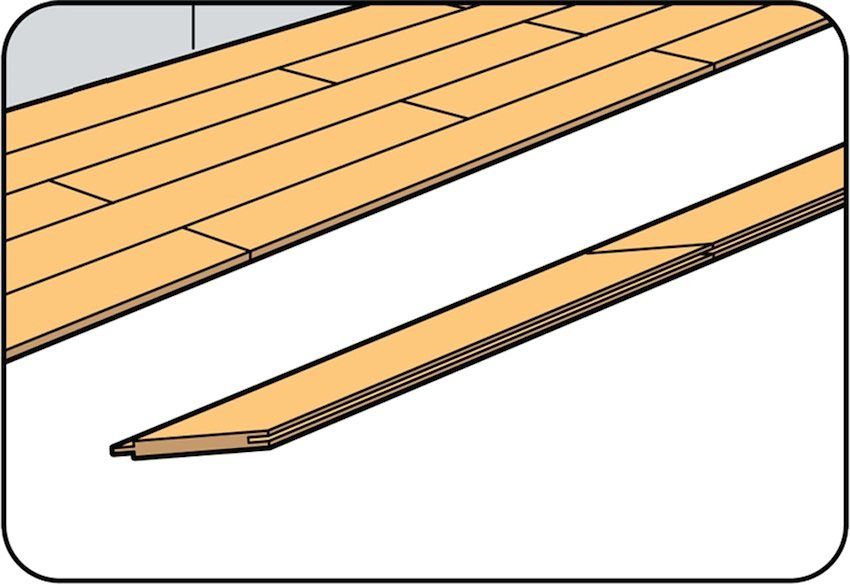
- the second row is joined by the second one, both rows are attached to the wall, wedges are installed to form a deformation gap;
- following technology joins the same series;
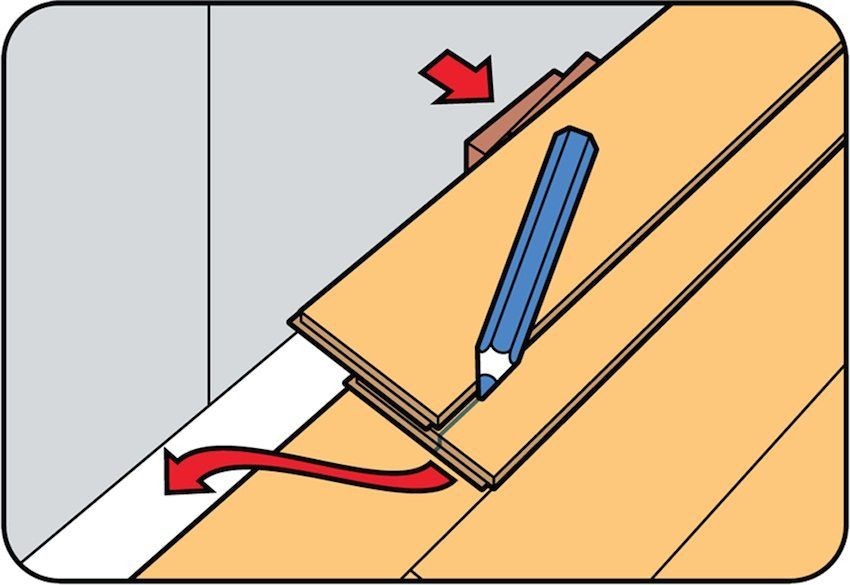
- under the door frame, the laminate is wound up in such a way that there is no gap between the floor and the doorposts. To this end, the box racks are filmed below the thickness of the laminate.
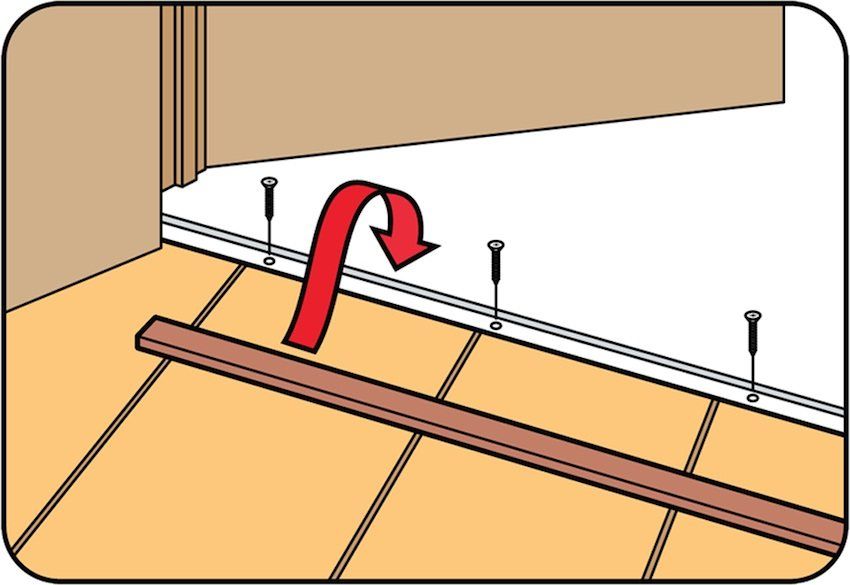
If a pipeline passes through the floor, then in the place of its passage through the laminate it is necessary to drill a hole with a diameter of 2 cm greater than the diameter of the pipe. This is done so that the floor can “float” freely with changes in temperature or humidity.
When choosing any scheme of installation of the coating, you can fix the laminate to the floor with a special construction adhesive, or you can choose to install the laminate in a floating way. This method means that the panels of the material are fastened together, but not attached to the base.
The caveat here is that for every 10-12 meters of coverage it is necessary to provide temperature joints, which will not allow the laminate to deform when the temperature drops in the room. In addition, between the wall and the laminate should also provide special gaps that can be hidden under the plinths.

The floating method will give you the following benefits:
- if an error is made during assembly, the finished coating can be easily disassembled and reassembled. Most manufacturers claim that this can be done up to three times;
- damaged or deformed during operation panels can be easily replaced with new ones;
- laying deck is easier than glue. In the photo laying laminate in this way can not see the differences with other mounting options;
- floor operation is possible immediately after the flooring and installation of baseboards, no need to wait until the glue dries.
In addition, installation in a floating way is possible directly on the prepared screed with the preliminary use of the thermal insulation substrate.
The main feature of laying the coating diagonally is that the panels are arranged at an angle of 45 degrees to the walls. On the video of laying laminate diagonally with your own hands you can see that installation should start from the center of the room, and then move in any direction that is convenient for you. It is necessary to leave a deformation gap of about 15 mm near the walls, as well as when laying in other ways.

Also on the video laying laminate diagonally, you can see that before starting the installation between the opposite corners of the room stretched thread. This is done in order to lay on it the first row of uncut panels. For cutting subsequent you can use a jigsaw or a hacksaw for metal.
Helpful advice! Do not throw away the parts of the panels that you cut off from the left side of the row; they will come in handy when laying the right side.
In the case of diagonal installation, it is very important to take into account the deformation gap when cutting the corners, which will then be laid against the wall.
Laminate with a chamfer is different from the usual one in that the edges of the upper part are bevelled on two or four sides. This allows the laminate to look like a flooring made of natural wood, and also protects the edges of the panels from splitting and chipping during operation.
In the video laying laminate with a chamfer it is noticeable that the installation of this type of flooring is no different from the installation of conventional laminate. Under the chamfered panels it is also necessary to mount the substrate layer, it is desirable to maximally level the base, and the installation of the panels can be carried out in parallel, perpendicular or diagonal.

Installation of the coating without thresholds is one of the most popular ways of laying laminate lately. Before choosing this option, consider a number of emerging nuances:
- when laying laminate without thresholds throughout the apartment need to make expansion joints, if the total area exceeds 50 m ?. Otherwise, the coating may swell, most often it occurs in the doorways;
- it is strongly not recommended to use the zero-threshold method if the floor area exceeds 120 m?
- Before starting the installation, it is imperative to measure the door height. The gap between the door leaf and the laminate should be approximately 1 cm;
- in the room in which the installation is done, there should be a low level of humidity, otherwise the coating will swell and deform, and the base of the floor should be as even as possible;
- as is the case with conventional laminate laying, the installation of an insulating substrate is necessary. It can be polyethylene foam, cork sheets or embossed cardboard laid in several layers. The recommended substrate thickness is 2-4 mm.

Many videos of self-laying laminate demonstrate that when installing a coating without thresholds, as with other methods, you can bond panels together in different ways. It is worthwhile to choose a compound with the help of glue if it is placed in a room with high humidity and high pollution. Then the joints will be sealed, there will be no dust and water between them. Castle method is good because it is faster, and the panels are adjacent to each other denser.
Helpful advice! Mounting on glue eliminates the possibility of laminate disassembly, so try to avoid installation errors.
The most difficult moment in laying without thresholds is the areas in the doorways. Firstly, the boards in the adjacent rooms should be laid in one direction, so you visually expand the space. Secondly, in a door frame it is necessary to do sawn where there will be a covering under its racks. Video self-laying laminate without thresholds will help you to do everything right and prevent common mistakes.

Choosing the appropriate method of laying such a flooring as laminate, you should take into account all the nuances of the room, the features of the selected panels, as well as take into account their skills and capabilities in terms of construction. Taking into account all these moments, you can make the perfect flooring with your own hands.

